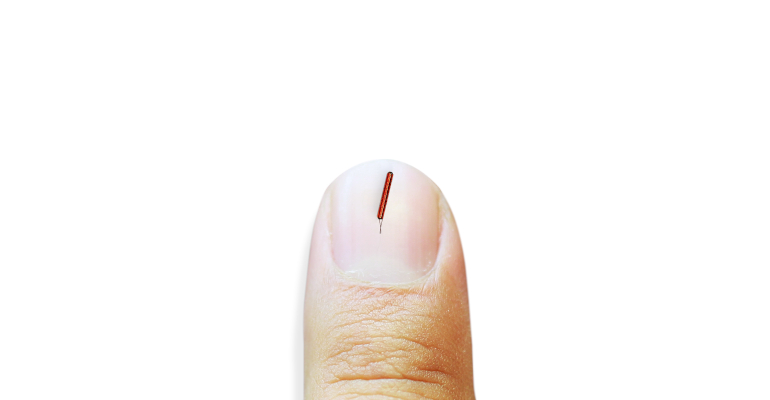Surgical Navigation: Breakthrough Innovations in 6DOF Expand Potential for Minimally Invasive Diagnostic and Therapeutic Devices
Advancements in electromagnetic tracking technology are broadly extending the viability of minimally invasive procedures. Whether it’s robotic navigated surgery or interventional imaging and tracking, less invasive procedures both diagnostic and therapeutic in nature could benefit cardiology and electrophysiology, endoscopy, neurosurgery, and ear/nose/throat specialties, spine and orthopedics, and more. With greater visibility, access, and precision enabled by tiny sensor assemblies integrated with finished medical devices, healthcare professionals can reach greater depths within the human body, reducing long-term care costs and improving patient outcomes.
Minimally invasive surgical (MIS) procedures augment surgical skill with technology, avoiding more debilitating surgical options that are accompanied by greater risks and extended recoveries—good for both patient and doctor. As an industry goal, advancing MIS procedures and their usefulness as a treatment in more healthcare situations is a direct challenge for medical device OEMs working to further transform these types of image-guided and interventional procedures. Improved precision, sensor miniaturization, and sensor/device integration are key factors in this effort. These factors can be driven by advances in 6DOF technology, or the “six degrees of freedom” that enable surgeons to access, navigate, and visualize more areas of the human body. Angular 6DOF, a new approach that delivers sensor data differently than traditionally collinear wound coils do, enables greater accuracy in surgical navigation and reach without increasing the size of the device.
Six Degrees of Freedom That Are Breaking New Ground
MIS procedures are computer-assisted affairs that rely on sophisticated electromagnetics to guide surgical tools. Precision is crucial, and surgeons must have critical awareness of a device’s location at all points during a procedure. Electromagnetic coils enable this, functioning as an antenna that is embedded in the surgical tool as an integral part of its design. While not visible—coils are covered by plastic extrusion or tubing—these tiny components are the internal navigator for the device itself, which in turn transmits images to a screen or other devices in the surgical theatre.

The electromagnetic coil functions as a tiny sensor, visualizing the tool’s precise location in real time. Wound with ultra-fine wire, coils enable an x-axis, y-axis, and z-axis for the data that generates a three-dimensional (3D) anatomical view. The device’s capability for accuracy is measured in degrees of freedom, referencing the range of trackability the sensor provides and, ultimately, balancing its precision with a size small enough to fit within the required MIS device.
Achieving six degrees of freedom requires two collinear wound coils, a design challenge in direct opposition to the need for smaller and smaller devices. Innovation in 6DOF has turned a corner in this battle—literally. Engineering advances have established that an angular coil allows the navigation system to read the 6DOF data but with a single coil. Using this new approach, device manufacturers can achieve the same or better accuracy with a smaller singular coil.
Collaboration Brings Precision to the Marketplace Faster
The angular method in which the coils are wound allows further miniaturization over traditional coil winding. Consider a device using the French size scale, a measurement of the outer diameter of the device itself. Using an improved angular 6DOF coil design could help in the overall reduction in the French size of a minimally invasive device while providing the same level of accuracy.
This is no small feat, and the understanding that customization is required in medical device design today extends to 6DOF sensor choices. Collaboration with ecosystem partners is needed, protecting development timelines, particularly as devices themselves are packed with more and more tools and overall engineering complexity. Customized electromagnetic coils are wound with wire much finer than a human hair—and smart partnership strategies are essential for easy device integration that simultaneously meets device performance requirements and regulatory demands.
Improving Patient Outcomes with Smaller, Smarter Devices
As single-use interventional and minimally invasive devices, such as catheters or guidewires, MIS tools help surgeons gain precision access to a patient’s anatomy to deliver a chosen therapy. Often in contact with the most sensitive areas of the human body, MIS tools may navigate the heart, lungs, and brain even as they reduce incision size, minimize hospital stays, decrease surgical trauma, and enhance patient care and results. Notably, with these improvements, surgeons have access to 6DOF tracking and visualization in areas of the body that they have previously been unable to navigate to that level of precision. For example, such MIS tools enable a device to enter a patient’s lung, even with anatomy that narrows as it deepens.
By shrinking devices, surgeons can access more regions of the human body than ever before and patients have more surgical options. New 6DOF enables medical personnel with more minimally invasive options—driving better treatment results, faster recoveries, and smarter procedures on a much broader level. These benefits have the potential to not only change patient perception of what it means to receive treatment but also to improve the ultimate outcome of that treatment.
Article source: MDDI Online by Garrett Plank









